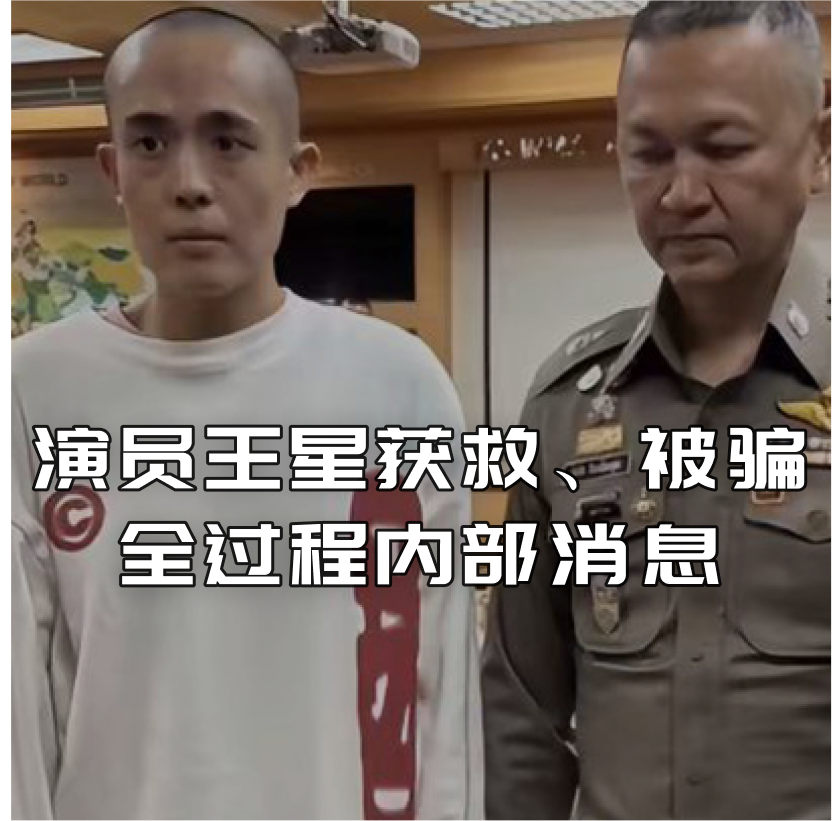㈠ VMware设置共享文件夹之后Ubuntu中看不到怎么办
1。确保您的虚拟机关机。2。编辑虚拟机的配置,添加共享文件夹,并启用它。例如,内我的宿主机是Windows 7 Bit64,共享容文件夹C:\TEST3。启动客户操作系统,例如,我的虚拟机操作系统是Ubuntu10.044。重要的是,打开一个终端窗口,运行 sudo vmware-install.pl,按回车接受默认值即可5。在/mnt/hgfs,你将会看到共享文件夹。恭喜!------------------------------------------------------------------------------------------------------------------------如果出现sudo: vmware-config-tools.pl不是命令的情况,请检查路径,如果路径正确,请写成sudo./然后他会检测是否已经有安装,有安装就会卸载,然后再装
㈡ vmware中windows虚拟机找不到本机共享的文件夹
看一下你的虚拟机网卡配置 配置成桥接模式应该就可以了
㈢ VMware设置共享文件夹之后Ubuntu中看不到怎么办
VMware 中的 Ubuntu 虚镇差拟机看不到共享文件夹怎么办?
如果你在 Ubuntu 虚拟机的文件系统 /mnt/hgfs 中看不到原先的共享文件夹了,可按照下列顺序操作:
1。确保您的虚拟机关机。
2。编辑虚拟机的配置,添加共享文件夹,并启用它。例如,我的宿主机是Windows 7Bit64,共享文件夹C:/TEST
3。启动客户操作系统,例如,我的虚拟机操作系统是Ubuntu10.04
4。重要的是,打开一个终端窗口,运行 sudo vmware-config-tools.pl,按回车接受默认值即可
5。在/mnt/hgfs,你将会看到共享文件夹。恭喜!
很简单吧,上面只是重新配置了一下 VMware 工具。如果对你有所帮助,请留个言。谢谢。
VMware下 Ubuntu 看不到共享文件夹之解决办法---我这里就是第三种方法解决的
初学Linux,在VMWare上装了Ubuntu10.04,主机端和虚拟机晌旅滚相互间的访问是必不可少的,途径有许多,其中vmware tool提供的共享文件夹方式简单又方便。然而,有时却莫名其妙的,在Ubuntu上看不到共享文件夹了,网上查了一下,有人说是Ubuntu更新使得看不到共享文件夹的,具体原因我没有深究宴余,但解决之道其实也很方便,从根本上来说就是:卸载,重装。而且这两个步骤运行一个脚本就能完成了。当然这里说的卸载不是指把给Ubuntu卸载了,而是说把 VMWare-tools卸载了。什么,你说不知道怎么卸载?不急不急,容我慢慢道来,呵呵....启动Ubuntu,点击VMWare 的菜单 VM --> Reinstall VMWare Tools,这样在Ubuntu端 /media 下 有个 VMware Tools文件夹,里面有个 VMwareTools-xxx-xxx.tar.gz 把它解压到其他目录(或先拷贝过去再解压,因为当前目录相当于是光驱,只读的),解压后得到一个 vmware-tools-distrib/文件夹,运行里面 vmware-install.pl脚本文件,它会先卸vmware tools 然后再安装,其中有很多提示要求确认,默认的即可。完成之后,再到/mnt/hgfs/下看看..............我们久违的共享文件夹又回来了。
㈣ VM虚拟机 找不到共享文件夹
故更新vmware-tools,点击update vmware-tools,删除掉/tmp目录下前个版本的vmware-tools-distrib以及安装包,将更新安装包复制到/tmp目录下。[[email protected] ~]# mount /dev/cdrom /mnt/cdrommount: mount point /mnt/cdrom does not exist[[email protected] ~]# cd /tmp[[email protected] tmp]# lsbashrc virtual-root.KkjqhXbashrc_hlink virtual-root.LHoockbashrc_slink virtual-root.LqnTi4bashrc_slink_2 virtual-root.lQtE6Remacs7RR680 virtual-root.Lx8UCYetc virtual-root.LZDDK2keyring-IdMO5s virtual-root.NmKmtQkeyring-KR3jPA virtual-root.oEJ6EYkeyring-LTujbu virtual-root.PE7rAjkeyring-o04jCc virtual-root.pPwnlDkeyring-oyoOxh virtual-root.qaVq5skeyring-psThJa virtual-root.QwmNmykeyring-QZCwGM virtual-root.r2bAXHkeyring-rPSusd virtual-root.Rgz9KFkeyring-U7tGGn virtual-root.rhMsvfkeyring-UcQZ3a virtual-root.sMp7VDkeyring-UDWQd3 virtual-root.ujjBTIman.config virtual-root.VCwMfzmvtest2 virtual-root.vEov6Rorbit-gdm virtual-root.VnMxasorbit-root virtual-root.WHPz5Ppulse-5bjypejDF8kQ virtual-root.xMpjI8pulse-7TpHe7zldIwM virtual-root.xsxXQhpulse-BL42PuWp8e8q virtual-root.XUm6X4pulse-mzQrmZsPx3XV virtual-root.Yf8rqltmp9MHNPP virtual-root.Z2Ceygtmpzk9bR7 virtual-root.zMzDYNvirtual-oracle.bn1mA7 virtual-root.ZWOk8dvirtual-root.1QXlik virtual-simba.36c6Jlvirtual-root.5CHiOt virtual-simba.b3Dvirtual-root.6L18AC virtual-simba.gxa4iyvirtual-root.B3ewf9 virtual-simba.wa2lwjvirtual-root.BABJU7 vmware-config0virtual-root.CO2hrg vmware-config1virtual-root.cScHZC vmware-config2virtual-root.Czvlke vmware-config3virtual-root.eHTiDs VMwareDnDvirtual-root.gd2MUn vmware-rootvirtual-root.GsXYFI VMwareTools-8.8.1-528969.tar.gzvirtual-root.hsntrp yum.logvirtual-root.IDGGfX yum_save_tx-2012-02-10-23-04hl1rlH.yumtxvirtual-root.kistah[[email protected] tmp]# tar zxpf VmwareTools-8.8.1-528969.tar.gztar (child): VmwareTools-8.8.1-528969.tar.gz:无法 open: 没有那个文件或目录tar (child): Error is not recoverable: exiting nowtar: Child returned status 2tar: Error is not recoverable: exiting now[[email protected] tmp]# tar zxpf VMwareTools-8.8.1-528969.tar.gz[[email protected] tmp]# lsbashrc virtual-root.KkjqhXbashrc_hlink virtual-root.LHoockbashrc_slink virtual-root.LqnTi4bashrc_slink_2 virtual-root.lQtE6Remacs7RR680 virtual-root.Lx8UCYetc virtual-root.LZDDK2keyring-IdMO5s virtual-root.NmKmtQkeyring-KR3jPA virtual-root.oEJ6EYkeyring-LTujbu virtual-root.PE7rAjkeyring-o04jCc virtual-root.pPwnlDkeyring-oyoOxh virtual-root.qaVq5skeyring-psThJa virtual-root.QwmNmykeyring-QZCwGM virtual-root.r2bAXHkeyring-rPSusd virtual-root.Rgz9KFkeyring-U7tGGn virtual-root.rhMsvfkeyring-UcQZ3a virtual-root.sMp7VDkeyring-UDWQd3 virtual-root.ujjBTIman.config virtual-root.VCwMfzmvtest2 virtual-root.vEov6Rorbit-gdm virtual-root.VnMxasorbit-root virtual-root.WHPz5Ppulse-5bjypejDF8kQ virtual-root.xMpjI8pulse-7TpHe7zldIwM virtual-root.xsxXQhpulse-BL42PuWp8e8q virtual-root.XUm6X4pulse-mzQrmZsPx3XV virtual-root.Yf8rqltmp9MHNPP virtual-root.Z2Ceygtmpzk9bR7 virtual-root.zMzDYNvirtual-oracle.bn1mA7 virtual-root.ZWOk8dvirtual-root.1QXlik virtual-simba.36c6Jlvirtual-root.5CHiOt virtual-simba.b3Dvirtual-root.6L18AC virtual-simba.gxa4iyvirtual-root.B3ewf9 virtual-simba.wa2lwjvirtual-root.BABJU7 vmware-config0virtual-root.CO2hrg vmware-config1virtual-root.cScHZC vmware-config2virtual-root.Czvlke vmware-config3virtual-root.eHTiDs VMwareDnDvirtual-root.gd2MUn vmware-rootvirtual-root.GsXYFI VMwareTools-8.8.1-528969.tar.gzvirtual-root.hsntrp vmware-tools-distribvirtual-root.IDGGfX yum.logvirtual-root.kistah yum_save_tx-2012-02-10-23-04hl1rlH.yumtx[[email protected] tmp]# cd vmware-tools-distrib[[email protected] vmware-tools-distrib]# lsbin doc etc FILES INSTALL installer lib vmware-install.pl[[email protected] vmware-tools-distrib]# ./vmware-install.plA previous installation of VMware Tools has been detected.The previous installation was made by the tar installer (version 4).Keeping the tar4 installer database format.You have a version of VMware Tools installed. Continuing this install willfirst uninstall the currently installed version. Do you wish to continue?(yes/no) [yes] yesUninstalling the tar installation of VMware Tools.Stopping VMware Tools services in the virtual machine:Guest operating system daemon: [确定]The removal of VMware Tools 6.0.2 build-59824 for Linux completed successfully.Thank you for having tried this software.Installing VMware Tools.In which directory do you want to install the binary files?[/usr/bin]What is the directory that contains the init directories (rc0.d/ to rc6.d/)?[/etc/rc.d]What is the directory that contains the init scripts?[/etc/rc.d/init.d]In which directory do you want to install the daemon files?[/usr/sbin]In which directory do you want to install the library files?[/usr/lib/vmware-tools]The path "/usr/lib/vmware-tools" does not exist currently. This program isgoing to create it, including needed parent directories. Is this what you want?[yes] yesIn which directory do you want to install the documentation files?[/usr/share/doc/vmware-tools]The path "/usr/share/doc/vmware-tools" does not exist currently. This programis going to create it, including needed parent directories. Is this what youwant? [yes] yesThe installation of VMware Tools 8.8.1 build-528969 for Linux completedsuccessfully. You can decide to remove this software from your system at anytime by invoking the following command: "/usr/bin/vmware-uninstall-tools.pl".Before running VMware Tools for the first time, you need to configure it byinvoking the following command: "/usr/bin/vmware-config-tools.pl". Do you wantthis program to invoke the command for you now? [yes] yesInitializing...Making sure services for VMware Tools are stopped.[EXPERIMENTAL] The VMware FileSystem Sync Driver (vmsync) is a new feature thatcreates backups of virtual machines. Please refer to the VMware Knowledge Basefor more details on this capability. Do you wish to enable this feature?[no] noFound a compatible pre-built mole for vmci. Installing it...Found a compatible pre-built mole for vsock. Installing it...The mole vmxnet3 has already been installed on this system by anotherinstaller or package and will not be modified by this installer. Use the flag--clobber-kernel-moles=vmxnet3 to override.The mole pvscsi has already been installed on this system by anotherinstaller or package and will not be modified by this installer. Use the flag--clobber-kernel-moles=pvscsi to override.The mole vmmemctl has already been installed on this system by anotherinstaller or package and will not be modified by this installer. Use the flag--clobber-kernel-moles=vmmemctl to override.The VMware Host-Guest Filesystem allows for shared folders between the host OSand the guest OS in a Fusion or Workstation virtual environment. Do you wishto enable this feature? [yes] yesFound a compatible pre-built mole for vmhgfs. Installing it...Found a compatible pre-built mole for vmxnet. Installing it...!!! [EXPERIMENTAL] !!!VMware automatic kernel moles enables automatic building and installation ofVMware kernel moles at boot they are not already present. By selecting yes,you will be enabling this experimental feature. You can always disable thisfeature by re-running vmware-config-tools.pl.Would you like to enable VMware automatic kernel moles?[no] noDisabling timer-based audio scheling in pulseaudio.Detected X server version 1.10.4Distribution provided drivers for Xorg X server are used.Skipping X configuration because X drivers are not included.Creating a new initrd boot image for the kernel.vmware-tools start/runningThe configuration of VMware Tools 8.8.1 build-528969 for Linux for this runningkernel completed successfully.You must restart your X session before any mouse or graphics changes takeeffect.You can now run VMware Tools by invoking "/usr/bin/vmware-toolbox-cmd" from thecommand line or by invoking "/usr/bin/vmware-toolbox" from the command linering an X server session.To enable advanced X features (e.g., guest resolution fit, drag and drop, andfile and text /paste), you will need to do one (or more) of the following:1. Manually start /usr/bin/vmware-user2. Log out and log back into your desktop session; and,3. Restart your X session.To use the vmxnet driver, restart networking using the following commands:/etc/init.d/network stoprmmod pcnet32rmmod vmxnetmodprobe vmxnet/etc/init.d/network startEnjoy,--the VMware teamFound VMware Tools CDROM mounted at /media/VMware Tools. Ejecting device/dev/sr0 ...[[email protected] vmware-tools-distrib]# cd /mnt[[email protected] mnt]# cd hgfs/share/#事先已经设置了share文件夹为共享文件夹[[email protected] share]#
㈤ 为什么我在vmware设置的主机共享文件夹在虚拟机中看不到
虚拟机与主机之间共享文件,须在虚拟机设置里先设置好,然后在虚拟机里访问共享文件。图示如下,供你参考:
1、在虚拟机设置里添加共享文件夹:
㈥ 虚拟机共享文件夹不显示不出来 应该怎么办呢
1、首先在自己的实体机(电脑)上的磁盘上新建一个文件夹,例如在G盘新建“虚拟机共享文件夹”。 2、打开OracleVMVirtualBox虚拟机,点击“启动”,打开虚拟机。 3、安装虚拟机的“安装增强功能”,安装完成之后。就开始在实体机和虚拟机之间建立文件的共享了。安装增强功能后,需要重启虚拟机。
㈦ win7虚拟机vm共享文件夹看不到
在虚拟机主页,选择Win7虚拟机的“编辑虚拟机设置”,进入设置。在“虚拟机设置”的“选项”选项卡下找到“共享文件夹”,在右侧点击“总是启用”,在下方点击“添加”进行共享文件夹的添加。在弹出的对话框下,浏览选择文件夹作为共享文件夹。共享文件夹的名称会自动填充,当然也可以自定义。点击“下一步”,进入文件夹属性指定的对话框,“启用共享”必选。如果不希望虚拟机对文件进行更改,也可以勾选“只读”。返回“虚拟机设置”对话框,选中自己的共享文件夹,勾选“在Windows客户机中映射为网络驱动器”。进入虚拟机,打开“计算机”就可以看到在“网络位置”的共享文件夹了。
㈧ MAC系统下Virtualbox虚拟机在映像网络驱动器中找不到共享文件
1,在Mac上选择想要设置共享文件夹的虚拟机,点击“设置”按钮。2,在虚拟机的设置窗口中点击“共享”选项。3,在共享设置窗口中点击“启用文件共享”选项。在这里先以把Mac电脑上的桌面共享出来为例:1,接下来我们启动虚拟机,进入系统以后VmwareTools工具提示我们检测到有与主机的共享文件夹,需要注销才能使用,点击“确定”按钮继续。2,注销成功以后,重新登录系统,你就会发现在虚拟机中的桌面上会显示Mac主机桌面上的文件。我这里在Mac上新建了一个名为“虚拟机文件夹共享测试”的文件,创建好以后,立即就会出现在虚拟机Windows系统的桌面上。同样地,当你在虚拟机系统的桌面上创建一个文件时,也会在Mac上显示。3,如果你想要共享多个文件夹的话,可以在虚拟机的共享设置窗口中添加即可。虚拟机默认为我们提供Mac,上的桌面、文稿、音乐、图片等共享选项,如果你要想添加其它文件夹的话,请点击“+”按钮。4,随后在Mac中选择想要共享的文件夹,点击“添加”按钮即可。,添加完成以后,即可在虚拟机中的共享设置窗口中看到新加的共享目录。5,接下来我们在虚拟机中打开“计算机”窗口,可以看到一个有共享标识的ShareFolders目录,请点击打开。随后即可看到Mac与虚拟机之间所有的共享文件夹的列表,在整个苹果Mac电脑与Vmware虚拟机之间实现共享的关键是在虚拟机系统中安装VmwareTools工具,有了它才能够实现虚拟机与Mac间的共享功能。6,如果你按照上面的方法操作不成功的话,请检查是否虚拟机系统中正确安装了VmwareTools工具。




